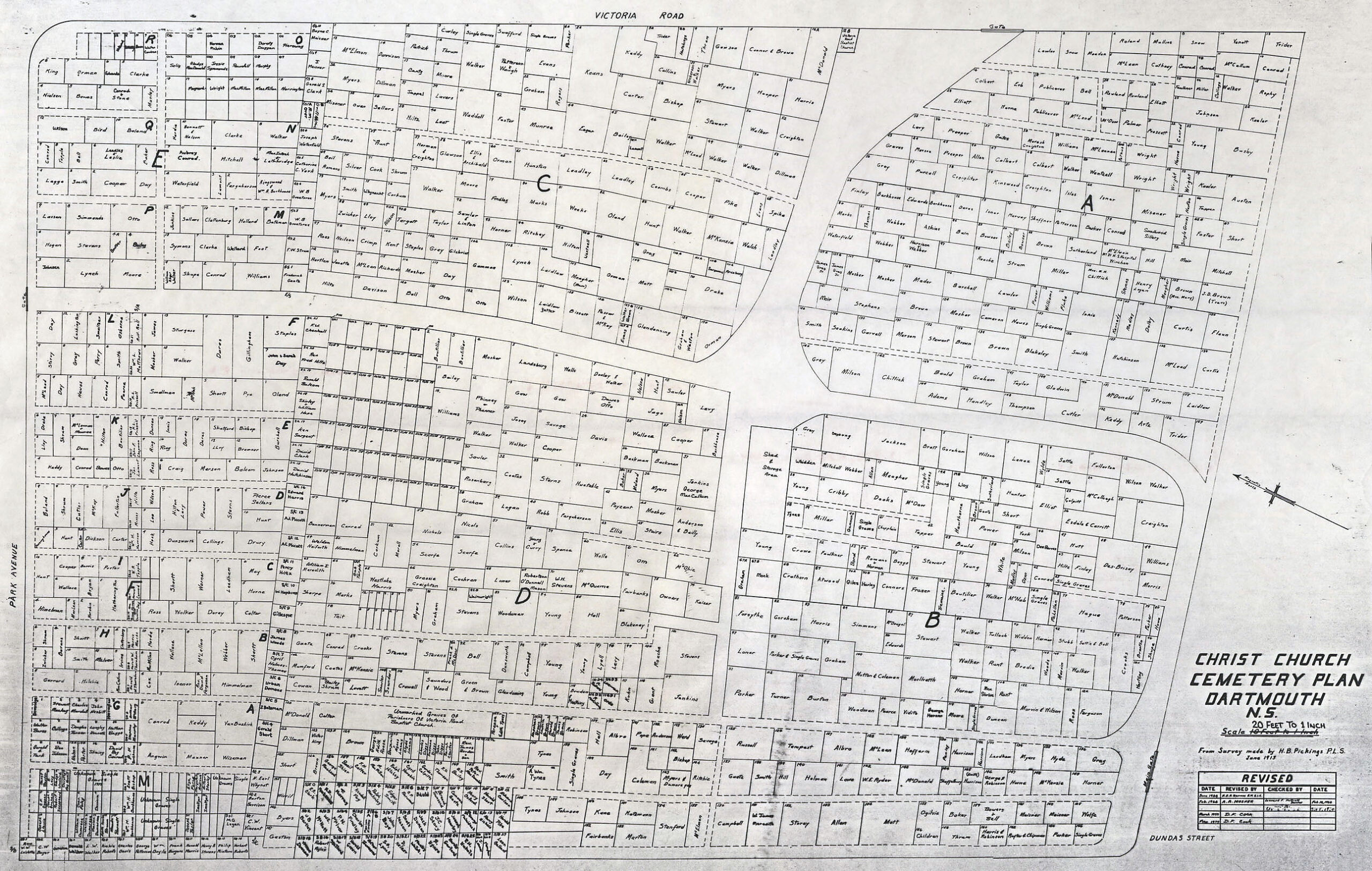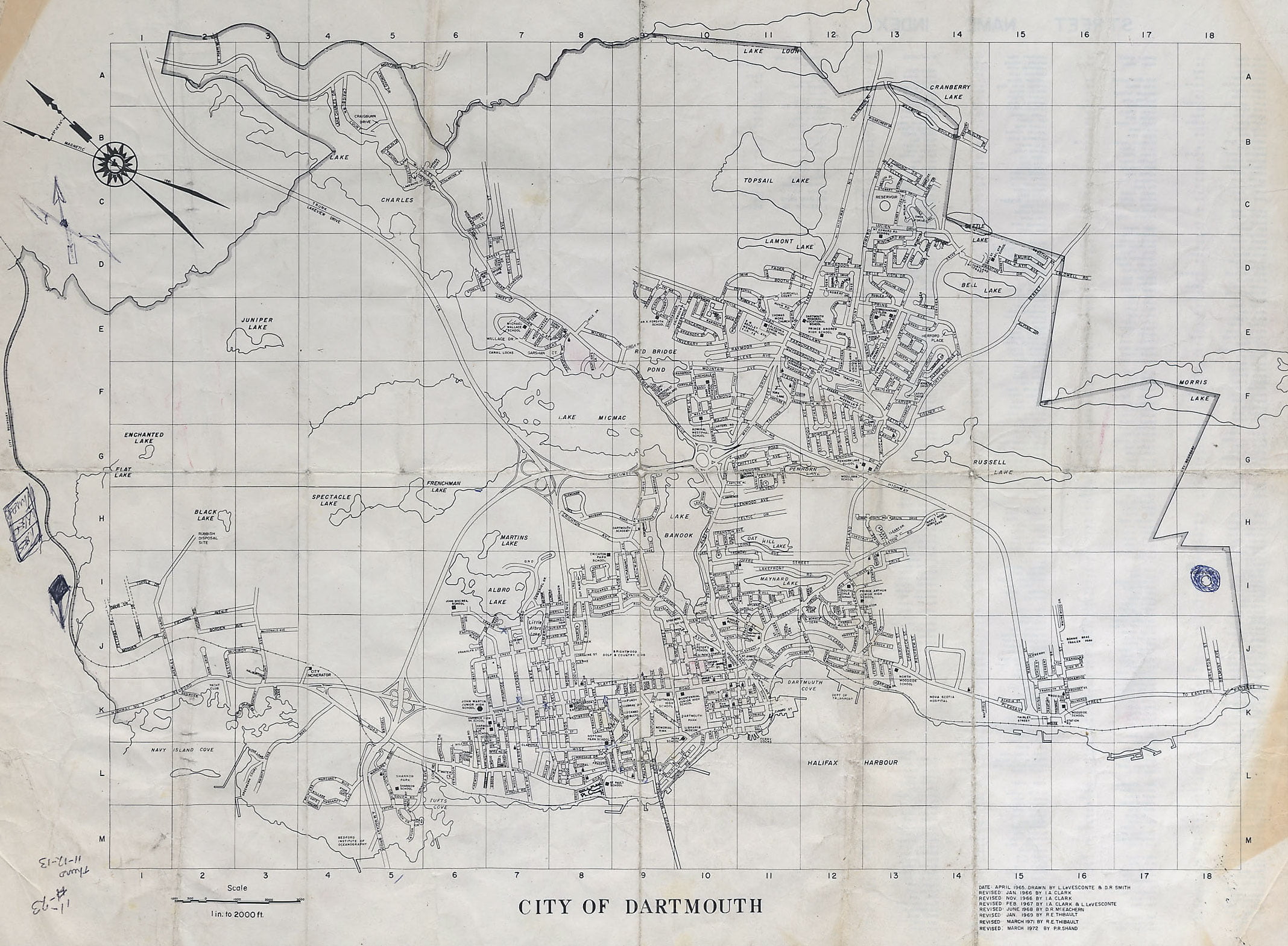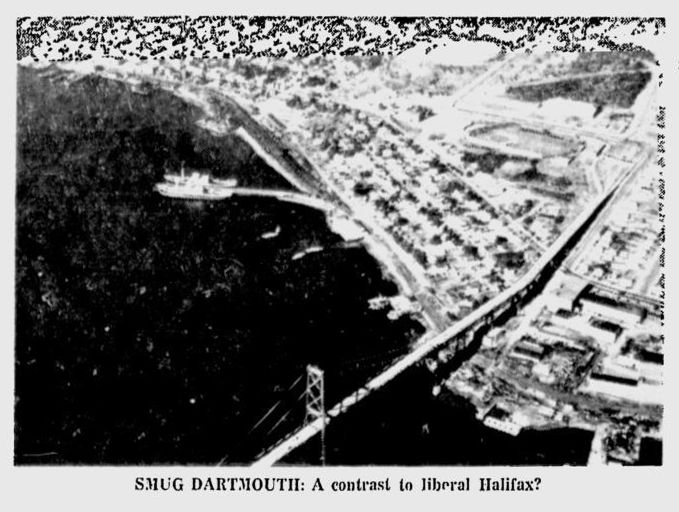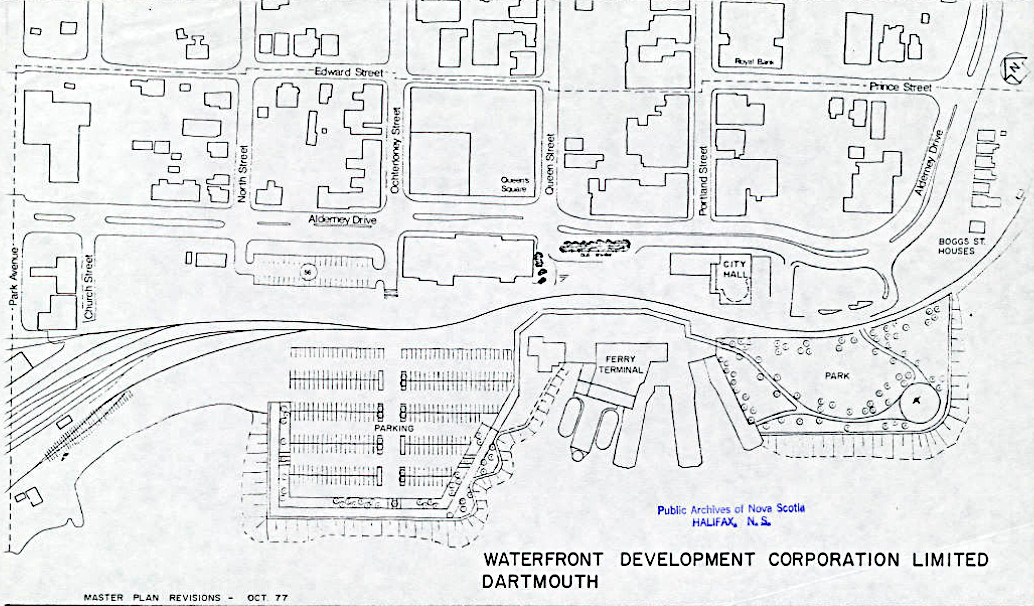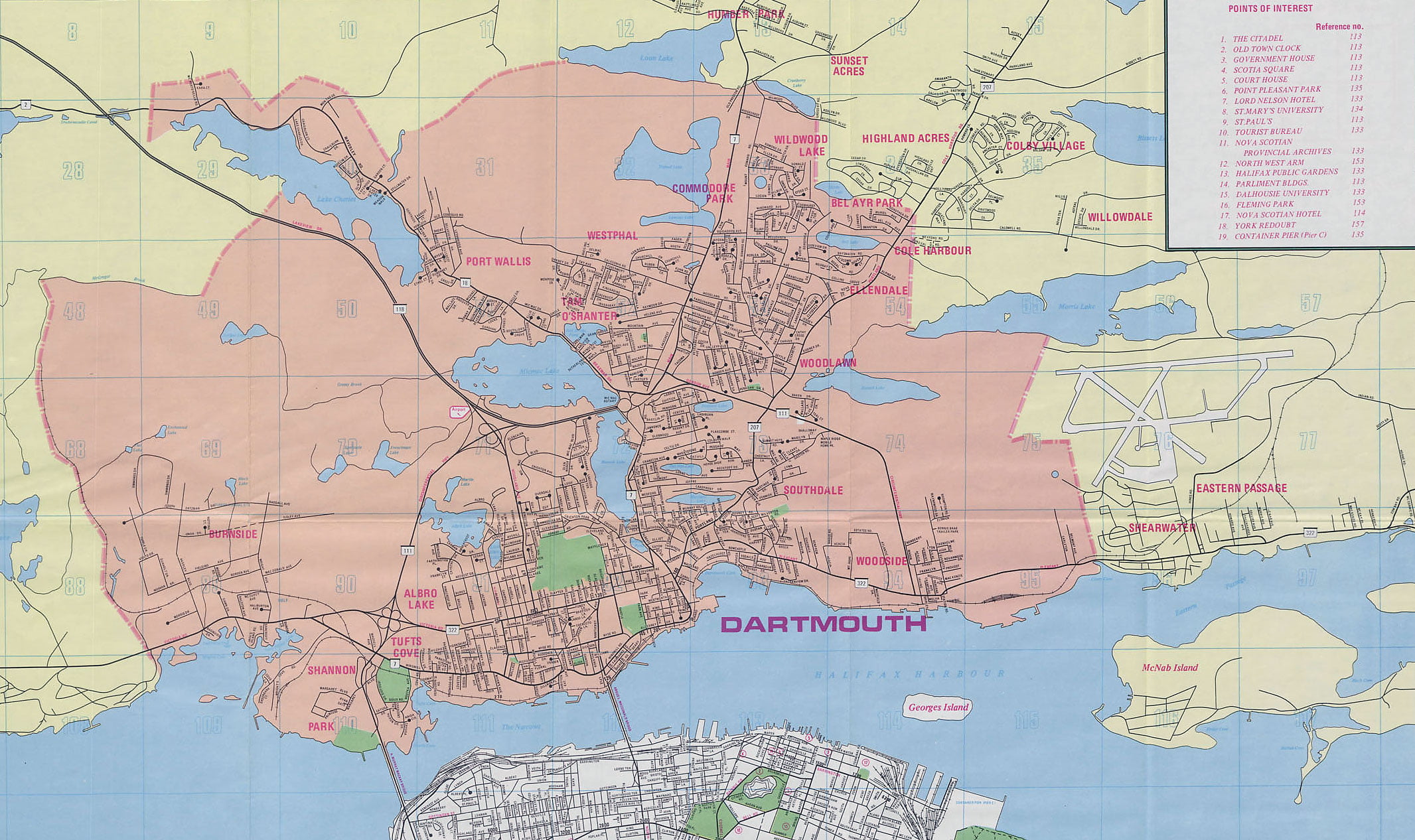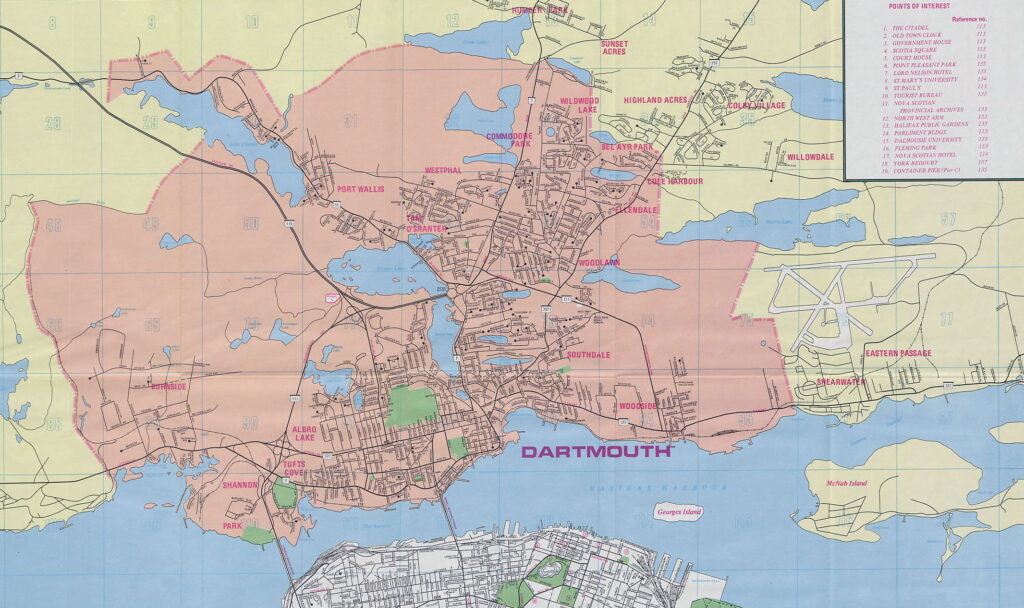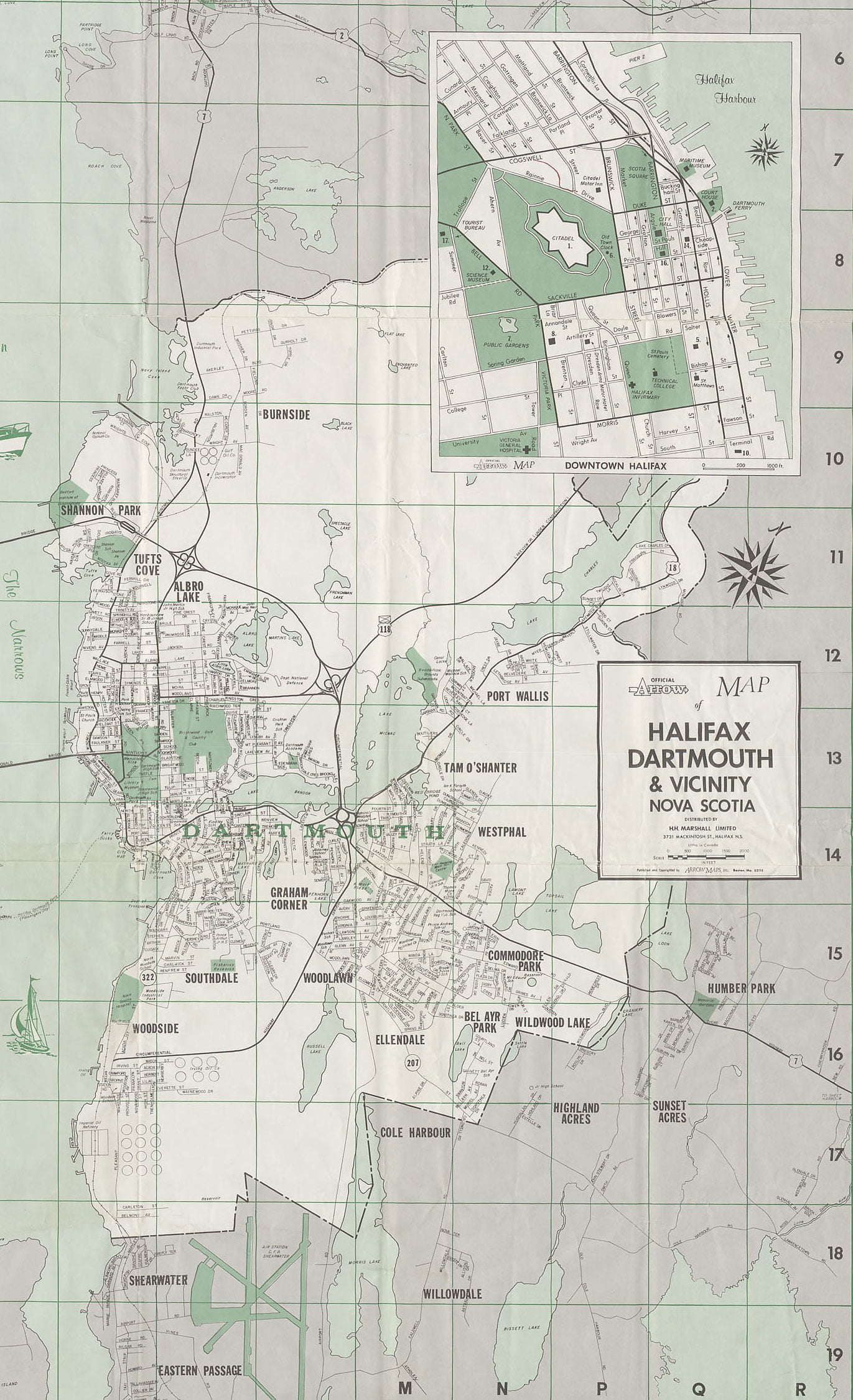The City of Dartmouth: General information
1.1 Historical background
Dartmouth was settled in 1750 as an extension of Halifax’s military and commercial operation. Being part of the County of Halifax, it was administered by a sheriff and a grand jury under the Court of Quarter Sessions until 1873. The City of Halifax was the first local entity to fight for its autonomy (granted in 1841 by its Charter) and Dartmouth followed the movement and became in 1873 the second local entity to be self-governed. Its town statute remained until 1961 when Dartmouth became a City with its own Charter.
1.2 Population
- 1966 – 58,745
- 1971 – 64,770
1.3 Area in acres
15,800 acres (estimated). (See Figure 4).
1.4 Provincial Act regulating the City
Legislative Assembly has adopted a revised charter for the City of Dartmouth; Statutes of Nova Scotia 1970, Chapter 89, Dartmouth City Charter.
1.5 Relationships with other municipalities
There is no regional government as such. Joint commissions and authorities have been created for special purposes and some services are shared on a contract basis.

2 Political structures
2.1 General form
The City has a Council-Manager form of government. (See Table 3 for a list of the members of the Council).
2.2 Eligibility regulations
2.2.1 Universal suffrage for Canadians and British subjects of 19 years or more who were resident since the 1st of May of election year (no property requirements). In addition non-residents who are assessed in respect of real property within any polling district to the value of $300. and over are eligible.
2.2.2 Any Canadian citizen, resident of the City for one year preceding election day, of at least 21 years of age and whose name appears upon the assessment role of the City is eligible to run, for office.
Disqualification includes indebtedness to the City, employment with the City, contracts with the City, membership in the House of Commons or Senate of Canada.
2.2.3 Procedures for election Elections are held the third Saturday of October through a ward system, 14 Aldermen being elected in 7 wards, 2 in each ward. The Mayor is elected at large.
During the first year, 7 Aldermen and the Mayor are elected, the other 7 Aldermen being elected during the second year. The third year is left without election.
Table 3 List of officials of the City of Dartmouth
City Council
- Mayor – Mrs. Eileen Stubbs
- Deputy Mayor – John MacCormac
Aldermen
- Ward 1: John Kavanaugh, George Ibsen
- Ward 2: Ronald M. Smith, L. W. Granfield
- Ward 3: Thomas B. Davis, Hart Day
- Ward 4: Donald McDonah, Louis Cote
- Ward 5: J. D. C. MacCormac, Chester Sanford
- Ward 6: Donald K. Walkey
- Ward 7: C. D. Richie, Lauchlan Fredericks
Administration
- City Administrator: C. A. Moir
- Clerk and Treasurer: N. C. Cohoon
- Assessor: W. J. Symonds
- Purchasing officer: W. M. Whitman
- Chief Engineer: B . J. Fougere
- Planning and Development: D. A. Bayer
- Recreation: D. A. Lynch
- Welfare Services: – W. M. MacNeil
- Police Department: R. Smith
- Fire Department: C. Findlay
- Industrial Promotion officer: vacant (November 1973)
The Aldermen are elected for a term of three years, without any limitation on the number of terms. The office is regarded as a part-time appointment.
In 1970, actual votes were 9,445 for 30,364 registered voters, a tun out of 31%.
A referendum can be held on matters decided by the Council; procedure and forms applicable for election of Mayor and Aldermen shall be used in such a case. Specific by-laws regulating referendum procedures shall be approved by the Minister of Municipal Affairs. There has been no such recourse in the last years.
Political Party
There is no form of political party at municipal level in Dartmouth.
2.3 The Council
2.3.1 Members The Council is formed of 14 Aldermen and the Mayor, with the Mayor presiding with a casting vote only.
2.3.2 Meetings The Council holds meetings the lst Tuesday of every month and, if necessary, the 3rd Tuesday of every month.
2.3.3 Powers of the Council
Council carries out its functions through adoption of regulations or by-laws. Specific procedure is established for adoption of bylaws: 3 distinct and separate readings before it is finally passed and not more than two readings shall be had at one meeting of the Council (section 126).
Charter gives powers to the City to achieve specific functions (Sections 135 to 182).
- determination of land use and establishment of regulations in regard to land use: planning, zoning, building construction;
- undertaking of works to organize land use: streets, water supply and sewer, housing;
- operation of services for the Community: transportation, police, fire, health and welfare, education and recreation.
Charter gives to the City powers to establish mechanisms to achieve above mentioned specific functions:
- Administration (section 183-217)
- Taxation and finance (section 218-291)
- Assessment (section 292-323)
- Boards and Commissions (section 324-341)
- Liens and tax collection (section 342-378)
- City Court (section 379-400)
- Legal proceeding (section 401-447)
- “In addition to powers specifically allotted to it, the Council has the power to do all such things as are incidental or conducive to the exercise of the allotted powers”. (Section 138).
2.3.4. Control of Council’s decisions
No additional approval is needed for a by-law duly adopted by the Council, exception existing for powers conducted by by-laws under A7 sections of the Charter which require approval of the Minister of Municipal Affairs.
Main powers affected by this disposition are the re-definition of ward boundaries, Aldermen and Mayor’s duties, referendum procedure, housing and development schemes, establishment of Boards and Commissions, technical planning board and development officers, building by-laws and most of the by-laws regarding taxes and assessment.
(List of these exceptions are given in Schedule, Part III, P. 280, Dartmouth City Charter).
2.4 The Committees
The Council has recently decreased the number of Committees to two: Committee on Planning Development and Operations Members: 7 members from different wards. Meetings: 4th Tuesday of every month. Powers: Committee is advisory to Council on policy matters and specific subjects referred to the Committee by the Council. Committee on Finance and Social Services Members: 7 members from different wards and who are not members of Committee on Planning. Meetings: 2nd Tuesday of every month. Powers: Committee is advisory to Council on policy matters and specific subjects referred to the Committee by the Council.
2.5 The Mayor
Term of office: The Mayor is elected for three years, without any limitation on the number of terms. The office is regarded as a part-time appointment. Election and mandate: see point 2.2.2 eligibility and 2.2.3 election procedure.
Powers of the Mayor: The Mayor is the chief officer of the City. He presides over the meetings of the Council and of the Committees with only a casting vote.
3 Administrative structures
3.1 General
Dartmouth has a City Manager system.
(See Figure 5 City of Dartmouth Organization chart).
3.2 Staff
Approximately 700 full-time employees (excluding the teachers but including employees of the special authorities and wage-earners employed with various departments of the City).
3.3 Departments
The City created 9 departments, 3 for internal administration, 4 for City services and the departments of fire and police. (See By-law C-7. 1962). Every department has a director appointed by the Council who is responsible for the good administration of the department to the Council through the City administrator. In addition, the Council created, and placed directly under its authority, an industrial promotion officer. (By-law No. 96, 1966)
3.3.1 Recreation department Duties: The department has a mandate to organize recreation activities and to provide the necessary equipment. Organization and Staff: 9 employees in 3 divisions
- Parks and playgrounds
- Recreational activities
- Special programs.

Budget (1973 estimates): $659,900.
3.3.2 Social Services department Duties: The department has a mandate to administer welfare payments and to establish community services with the objective of social development. Organization and Staff: 19 employees in 3 divisions
- Community Residence (3 employees)
- Special Programs (1 employee)
- General Assistance (9 employees). Budget (1973 estimates): $2,239,700″ including $1,537,900 for welfare payments.
3.3.3 Engineering department Duties: The department fulfills 3 broad mandates – engineering design, survey control, and supervision of projects of the works division, or capital projects conducted by other departments; – regular public works (street, drainage and sanitary sewage systems, garage and public buildings) ; – maintenance and operation of water system. Organization and Staff: 162 employees in 3 divisions – Engineering (40 employees) – Works (80 employees) – Water Utility (35 employees). Budget (1973 estimates): $2,183,000 for Engineering and Works divisions. Water Utility division operates independently covering expenditures with revenue from sale of water. Actual expenditures for the Water Utility Division for year 1972 were $1,836,679, the accumulated deficit being $1,809,014.
3.3.4 Planning and Development Department Duties: The department has a mandate to prepare a master plan for the City (as dictated in the Planning Act), to prepare zoning and subdivisions regulations and to assume building inspection in accordance with City regulations. Organization and Staff: 11 employees in 3 divisions
- Planning (1 employee)
- Development (8 employees)
- Building inspector (3 employees). These are formal divisions. The director of the department is actually head of Planning division. There also exist close working relations between Planning and Development divisions.
Budget (1973 estimates): $117,600.
3.3.5 Internal administration departments – City Clerk and Treasurer (25 employees with a budget estimate for 1973 of $389,400 including the expenditures for the City administrator’s office).
- Assessment department (6 employees Budget 1973 estimates: $71,000).
- Purchasing officer (5 employees Budget 1973 estimates: $40,900).
3.3.6 Other departments
- Police department (100 employees Budget 1973 estimates: $1,215,000).
- Fire department (104 employees Budget 1973 estimates: $1,626,700).
(See Table 4 for Dartmouth City Budget).
- Industrial promotion and public relations officer. Duties: The officer has a mandate to collect statistics and information relative to industrial and tourist promotion and provide this information to manufacturers and others and organize publicity for tourists.
Table 4 City of Dartmouth 1972-73 estimates

As public relation officer, he shall provide liaison between the City and organizations having civic interests, the news media and the general public.
Staff: 1 employee. The position is vacant at the present time.
3.4 Administrative superstructure
The City Administrative Officer is called “City Administrator”, and is appointed by the Council.
He acts as chief administrative officer, director of personnel and labour relations coordinator between departments through an informal management committee held once a week (each Tuesday morning) regrouping all heads of departments. Agenda is prepared by the City administrator; officer responsible for relations between administrative and political levels. There is no direct contact between Committees of the Council and corresponding departments; coordinator between special authorities and City departments.
4 Special authorities
4.1 The School Board
Duties: As specified in the Education Act and sections 324 to 341 of the City Charter, to control and manage the public schools of the City.
Functioning: The Board of Commissioners is composed of 15 persons, 9 from the Council of Dartmouth and 6 appointed by Governor-in-Council of N.S. They meet once a month.
The Board has 122 employees (administrative and support) and 961 teachers.
The Council has approved a budget of $11,757,400 for year 1973. From an administrative view point the functioning of the School Board is closely related to the administrative process of the City.
- through the Board of Commissioners: 9 out of 15 members being members of the Council;
- through personnel administration: labour relation and wage policy established and managed at the office of City administrator;
- through financial administration: city clerk and treasurer and budget officer are responsible for budget operations of the School Board. Budget shall be approved by the Council;
- through support services: engineering department provides an ad hoc basis technical support to the School Board.
4.2 Ferry service
Duties: To operate a ferry service for pedestrians between Dartmouth and Halifax Harbour.
Functioning: The Ferry service is directly administered by the Council (there is no Board). The service has 19 employees and had expenditures of $310,655 for the year 1972. The City gives no subsidy to the service, all operation expenses being covered by fare revenues. The bus transit company is privately owned in Dartmouth and receives no subsidy from the City.
4.3 Dartmouth Industrial Commission
Duties: The Commission has been created by by-law to organize industrial promotion and recommend industrial policy to the City Council. Functioning: The Commission is composed of 11 members (the Mayor, 5 Aldermen and 5 citizens chosen by the Council). The Council has approved budget estimates of $34,000 for the year 1973. The Burnside industrial park is directly administered by the Council with recommendation from the Industrial Commission.
4.4 Joint Commissions
4.4.1 Mayor represents the City on the Board of: – Halifax Dartmouth Regional Authority (see part 1-A, pt.4.4.1) – Halifax Dartmouth Bridge Commission (see part 2-B, point 2.1) – Halifax Dartmouth Port Commission (see part 2-A, point 2.2.1)
- Metropolitan Area Planning Commission (part 2-A, point 2.1.1)
4.4.2 Other Joint Commissions – Regional Social Planning Council.
(1973 estimates: $5,400).
4.5 Other special authorities
- Dartmouth Emergency Hospital. Budget (1973 estimates): $426,000 which the City shares for an amount of $29,000.
- Court: Budget (1973 estimates): $58,500.
- Tourist Commission (1973 estimates): $14,300
- Dartmouth Park Commission (1973 estimates) : $14,000.
- Heritage Museum Board (1973 estimates): $32,800.
- Regional Library Board (1973 estimates) : $212,000
Halifax County:
In 1759, the province was divided into five Counties, including the County of Halifax which included the townships of Halifax and Dartmouth. For local purposes, it was administered under the Court of Quarter Session system by a sheriff. After the incorporation of Halifax (1841) and Dartmouth (1873), which made those cities geographically but not politically part of the County, the House of Assembly adopted the County incorporation Act in 1879. The Municipality of the County of Halifax was incorporated under this Act in 1880.

In the City of Dartmouth, the department of Engineering is responsible for street design and construction and for the operation of traffic control equipment. The Dartmouth Transit Company is privately owned but works in consultation with City officers in the determination of routes and the level of service. In addition, the City of Dartmouth owns a ferry service for pedestrians only between Halifax and Dartmouth.
“Profile: Halifax-Dartmouth – The Political And Administrative Structures of the Metropolitan Region of Halifax-Dartmouth”, Bernard, André. Ottawa : [Ministry of State, Urban Affairs, Canada]. 1974. https://archive.org/details/39082108060321


